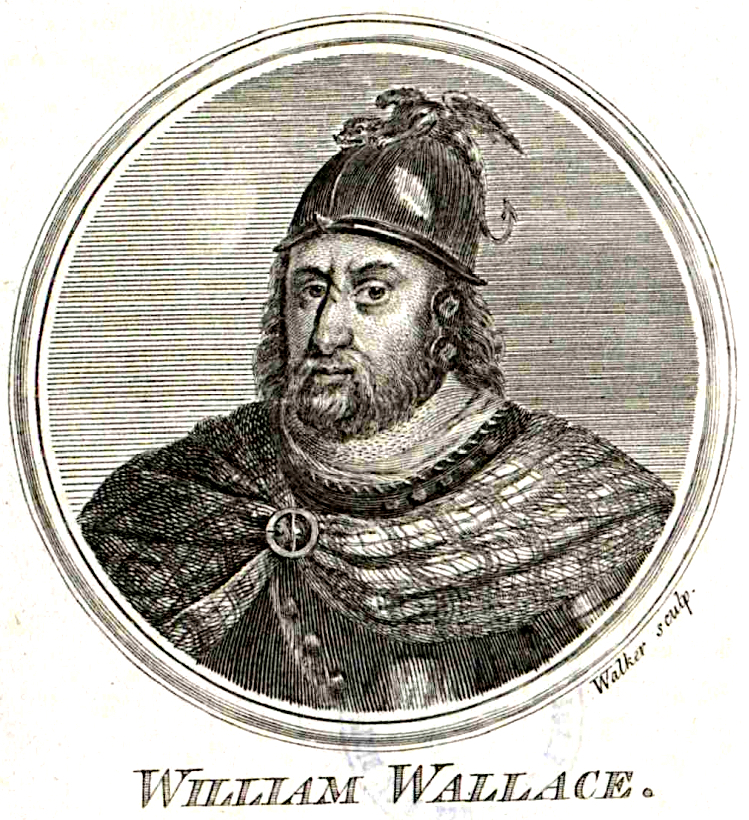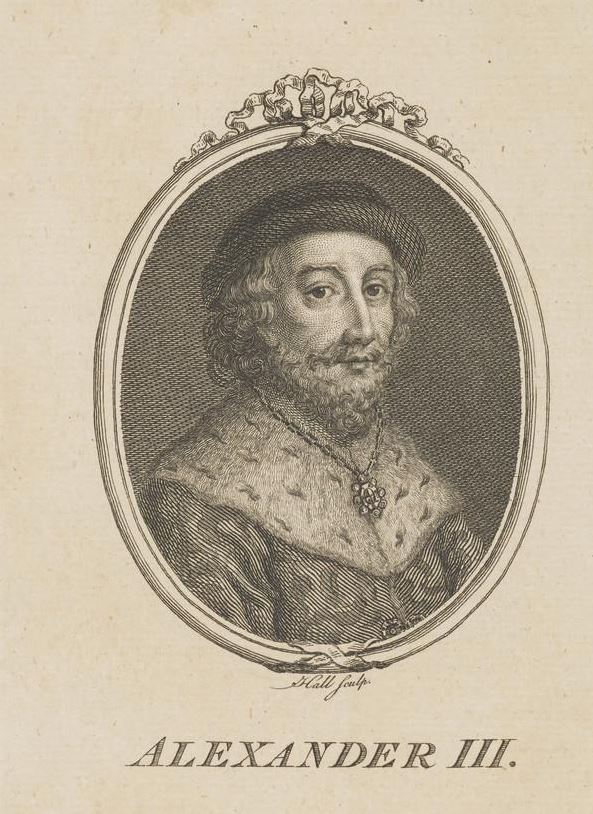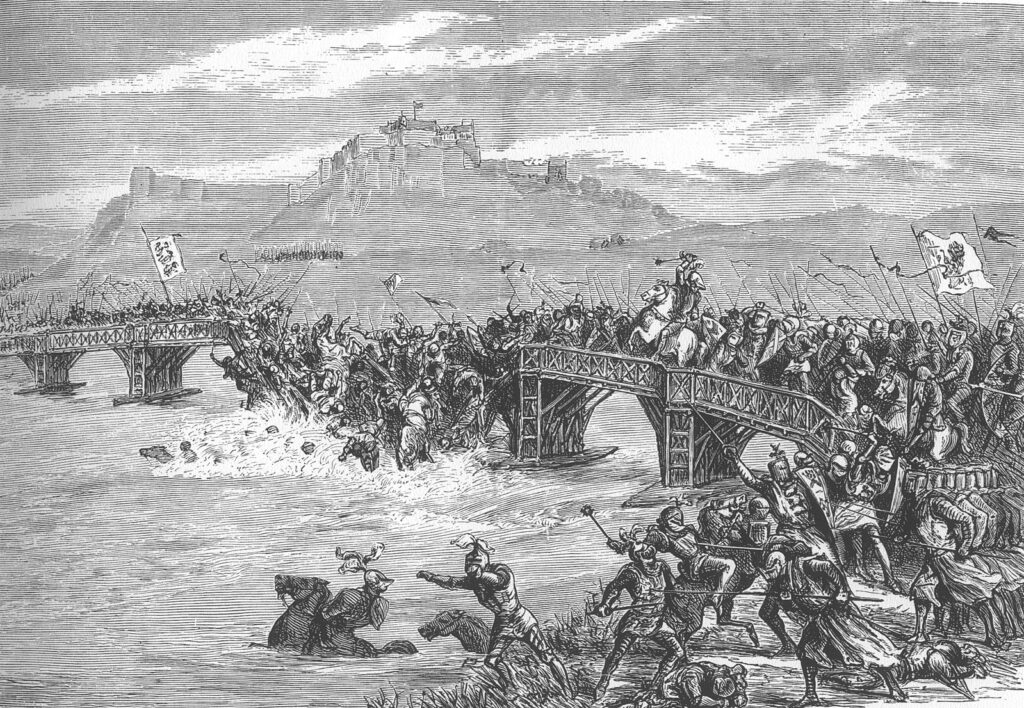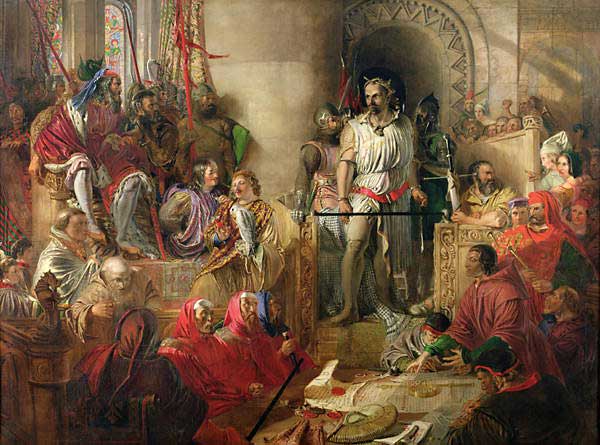Those who watched the 1995 epic historical drama ‘Braveheart’ know the story of Sir William Wallace quite well. He was the warrior who led the Scots in the First War of Scottish Independence.
However, Hollywood has romanticized many aspects of his life. In this article, we discuss the real story of Sir William Wallace.

Who Is Sir William Wallace?
Sir William Wallace was one of Scotland’s greatest heroes who fought for the country’s independence.
He was born in 1270. Little is known about his family, but they are believed to be of lower nobility. Sir William was said to be the second son of Sir Malcolm Wallace of Elderslie in Renfrewshire, a landowner of James Stewart, the 5th High Steward of Scotland. Others say his father was named Alan.
Some accounts portray Sir William as a commoner because it creates a more exciting narrative. A “man of the people” is more sympathetic than a wealthy landowner who lorded over people all his life.
Not much is known about Sir William’s life before the battles that made him a hero. Historians surmised that he must have had military experience because his tactical mind led to many successful battles.
In the 1995 film ‘Braveheart,’ much of Sir William’s motivation to fight for Scotland was a thirst for revenge following the death of his wife. The movie also showed Sir William having an affair with Queen Isabella of France, the wife of Edward II (King Edward I’s son).
The truth is, there is no record of Sir William having a wife. There is also little chance he ever met Queen Isabella.
The Great Cause: The Event That Incited the War
Scotland enjoyed relative peace and economic stability under the reign of King Alexander III while Sir William was growing up. But when the king died after falling from his horse, it sparked The Great Cause.
The Great Cause was an enormous dispute about the successor of King Alexander III, the King of Scots from 1249 until his death in 1286. Alexander married at 10 and had three children with wife Margaret. He survived all his children, which meant he didn’t have a direct heir when he died.

The closest heir was a granddaughter, Margaret, known as the Maid of Norway. She was only three years old when Alexander died, so a government of guardians ruled on her behalf.
When she turned seven, Margaret traveled to Scotland to sit on the throne. Being a young monarch wasn’t new to the family—Alexander took the throne when he was eight.
However, Margaret died on her journey to Scotland. With the crown vacant, the competition was fierce. Thirteen nobles argued their “great cause” to become the next King of Scotland with King Edward I of England as arbitrator. Of the 13 contenders, John Balliol was chosen as the rightful successor and confirmed in 1292.
England invaded, and King Edward I became the ruler of Scotland in 1296. For the Scots, resistance was the name of the game. And no resistance was as significant as that of Sir William Wallace’s.
Sir William’s Winning Battles
Sir William led many uprisings before he became a leader in Scotland’s First War for Independence.
Action at Lanark
In May 1297, Sir William led an attack in Lanark, Scotland. He killed Sheriff of Lanark William Heselrig. It was just one of the many uprisings and rebellions across the country.
Sir William led battles in the south, while the northern resistance was led mainly by Andrew Moray, a squire who stepped up to fight.
Raid of Scone
Several months later, Sir William Wallace joined Sir William Douglas to attack the city of Scone. The raid forced the Justice of Scotland, William de Ormesby (an English appointee), to cede control of the area to the Scots.
Unfortunately, Douglas fell into the hands of the English.
Battle of Stirling Bridge
The Scottish revolts weren’t always successful. Many Scottish nobles were forced to submit to English leaders in Irvine in the same year. However, Sir William and Andrew Moray of the North were able to link up and control most of northern Scotland by 1297.
One of the most pivotal events in the First War of Scottish Independence was the Battle of Stirling Bridge on September 11, 1297.
At the time, Stirling was considered the Gateway of the Highlands. It was the only crossing—a narrow wooden bridge that could only accommodate two horsemen side by side—that led to northern Scotland. Sir William and Moray assembled near the River Forth and waited for the English army to cross.
While there are no records of the number of men on both sides, many believed that the English army, which had more financial resources, greatly outnumbered their Scottish counterparts. They were also likely more experienced on the battlefield. But with this came complacency and overconfidence.

When a significant number of English soldiers were on the bridge, Sir William and Moray sent their troops to slaughter them. Spearmen lent support from high ground.
At some point, the bridge collapsed under the weight of the battle and the retreating English army. Some English soldiers died from fighting, while others drowned.
The success gave the duo of Sir William and Moray the moniker of Guardians of the Kingdom of Scotland. Unfortunately, later that year, Moray died from his wounds from the battle.
Invasion of England
The victory at the Battle of Stirling Bridge resulted in an almost occupation-free Scotland. After the English defeat, Sir William and Moray wrote official letters declaring Scotland free from invaders. They even invited the cities of Hamburg and Lubeck in Germany to resume economic trade with Scotland.
Even after Moray passed, Sir William continued his fight to regain control over his home country. When that was done, he set his sights on invading England.
Sir William led his troops towards English counties Cumberland and Northumberland. The town of Alnwick was burned, and the city of Carlisle was besieged. He offered protection to the monks of Hexham out of respect.
By the end of 1297, William Wallace was knighted for his major contribution to Scottish independence.
The Fall of William Wallace: Battle of Falkirk
As Guardian of Scotland, Sir William ruled the army and the country in the name of King John de Balliol, who was still in an English prison. However, he didn’t have support from the nobles.
He only had Bishop Robert Wishart of Glasgow and Robert the Bruce, another First War hero who later became King of Scots, on his side. The rest were quite lukewarm about his leadership.
In April 1298, King Edward I ordered another attack on Scotland. He paid Welsh soldiers to join the fight, but they failed, and the English army retreated.
Three months later, Edward I received intelligence that the Scottish army was in Falkirk, northwest of Edinburgh. The king took it as his chance to battle Sir William and his army.
At the Battle of Falkirk, the English had bigger horses, better archers and bows, superior soldiers, and exceptional strategies. Scotland lost the fight, and Sir William fled the battle. He was not killed, but his reputation suffered.
Sir William resigned as Guardian of Scotland and was succeeded by Robert the Bruce and John Comyn, the nephew of King John Balliol.
Few details are known about Sir William following this defeat. There were reports he became a diplomat and communicated with the French monarchy to help Scotland in the fight for independence from England. There were also reports regarding Sir William’s presence in France to advocate for Scotland.
By 1304, Sir William was back on the Scottish battlefield, leading an army against the English in Happrew and Earnside. This is the last known battle that Sir William led.
The Capture
Sir William evaded English soldiers many times.
But on August 5, 1305, close to a decade since he led Scotland to rebel against English leaders, Sir William fell into the hands of the enemy. Ironically, it was a Scottish knight, John de Menteith, who turned Sir William over to King Edward I—the traitor had a close relationship with the king.
The knight and Scottish hero was captured with Letters of Safe Conduct signed by King John Balliol, King Philip IV of France, and King Haakon V of Norway. King Edward of England didn’t honor any of these beseeches for mercy or leniency.

Less than three weeks later, Sir William was indicted and condemned to death. He didn’t go to trial because he was declared a traitor. Sir William repudiated this claim as he never swore allegiance to King Edward I.
Sir William was beheaded, quartered, and disemboweled in Smithfield, England. His head was displayed on London Bridge, while other body parts were showcased in Berwick and Newcastle in England and Perth and Stirling in Scotland.
This was done to warn the Scottish what would happen to them if they continued to rebel.
Conclusion
Little is known about Sir William Wallace’s early life and his personal connections. But one thing is certain: Sir William was a courageous warrior, and he made an immense contribution to the First War and the fight for Scottish independence.

